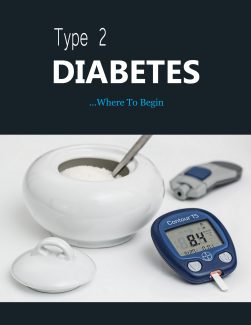
 License Type: Private Label Rights
License Type: Private Label Rights  File Type: ZIP
File Type: ZIP
 SKU: 63792
SKU: 63792  Shipping: Online Download
Shipping: Online Download
Sample Content Preview
Type 2 diabetes is the most common form of diabetes. Of the more than 30 million Americans with diabetes, 90% have type 2 diabetes, while the remainder have type 1, or insulin-dependent diabetes.
In type 1 diabetes, the body’s own immune system damages the insulin-producing cells in the pancreas. Type 1 diabetes can’t be cured and requires daily insulin treatment. In contrast, type 2 diabetes can be managed by diet and lifestyle changes, although some people will also need medication to manage their blood sugar levels.
Type 2 diabetes occurs when the body doesn’t handle insulin well or cells stop responding to it, causing blood sugar levels to become too high. Over time, if it isn’t treated, high blood sugar causes serious damage throughout the body, resulting in vision problems, skin infections, and an increased risk of heart disease and stroke.
Who Gets Type 2 Diabetes?
Type 2 diabetes begins with a period of prediabetes, when blood sugar levels are elevated but not as high as a full diabetes diagnosis. Prediabetes is more easily reversed than diabetes, so it’s important to be aware of both conditions. If your blood sugar is high but you don’t yet have diabetes, it’s important to make changes to bring your blood sugar down.
The main risk factors for both prediabetes and type 2 diabetes are the same. They include:
Being overweight or obese
Having a waist circumference of 40” or more for men, or 35” or more for women
Being 45 years or older
Having a family history of diabetes
Having had gestational diabetes or having given birth to a baby over 9 pounds
Being sedentary (physically active less than three times a week)
Being of African American, Hispanic, American Indian, Alaska Native, Pacific Island, or Asian American descent
While the risk of type 2 diabetes increases with age, people of any age can get it. In fact, the number of children diagnosed with type 2 diabetes has steadily increased over the past couple of decades, alongside the rise in childhood obesity. The number of youths under 20 with type 2 diabetes is still small – less than 200,000 children and teens – but as childhood obesity increases, these numbers are likely to increase.
A healthy diet and plenty of activity is the key to preventing type 2 diabetes in children. Only one in three American children get daily physical activity, yet children and teens should be active for at least an hour every day.
How Diabetes Is Diagnosed
Type 2 diabetes is diagnosed with several tests that show your blood sugar levels. Your doctor will test you if you show symptoms of diabetes. Many doctors will also conduct regular blood sugar tests as part of your annual check-ups. This is important since in its early stages, type 2 diabetes may not show symptoms, or the symptoms may be very mild. You should talk to your doctor about routine diabetes screening if you:
Have a body mass index (BMI) over 25 (23 if you are of Asian descent) and have high blood pressure, high cholesterol, are sedentary, have a history of polycystic ovarian syndrome (PCOS), or have a family history of diabetes.
Are older than 45. If your initial test is clear, retests are advised every three years.
Have a history of gestational diabetes.
Have prediabetes with mildly high blood sugar.
Diabetes is diagnosed through blood tests. The most common test is a glycated hemoglobin (A1C) test, which measures your average blood sugar level. An A1C level of 6.5% on two separate tests means that you have diabetes, an A1C level between 5.7 and 6.4% shows prediabetes, and less than 5.7 is a normal reading. In some cases, your doctor may also recommend a random blood sugar test, a fasting blood sugar test, or an oral glucose tolerance test.
If your doctor suspects that you might have type 1 diabetes rather than type 2 diabetes, you will need urine tests for specific byproducts that are produced in the kidneys of people with type 1 diabetes.
If you have been diagnosed with prediabetes, it’s important to make lifestyle changes as soon as possible to prevent diabetes. The same lifestyle changes are needed with diabetes, and your doctor may also recommend some medications.







